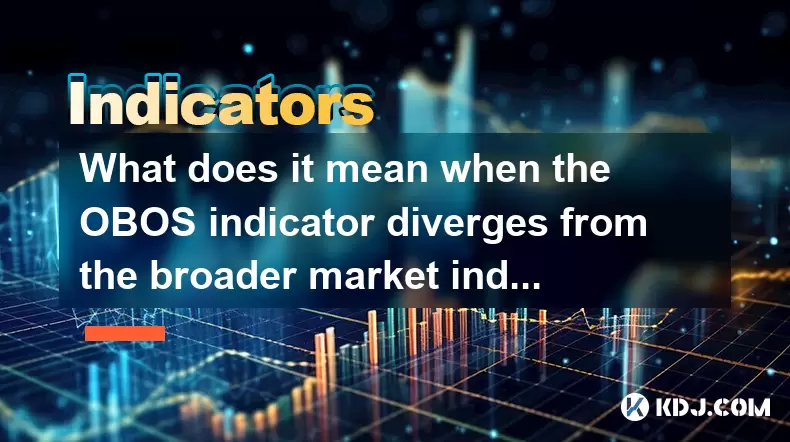-
 Bitcoin
Bitcoin $115100
-1.30% -
 Ethereum
Ethereum $4758
-1.70% -
 XRP
XRP $3.027
-2.19% -
 Tether USDt
Tether USDt $0.9998
-0.01% -
 BNB
BNB $883.2
-1.42% -
 Solana
Solana $204.0
2.62% -
 USDC
USDC $1.000
0.02% -
 Dogecoin
Dogecoin $0.2371
-0.97% -
 TRON
TRON $0.3612
-1.24% -
 Cardano
Cardano $0.9128
-2.19% -
 Chainlink
Chainlink $26.13
-3.93% -
 Hyperliquid
Hyperliquid $44.73
0.90% -
 Sui
Sui $3.715
-0.56% -
 Stellar
Stellar $0.4153
-2.41% -
 Ethena USDe
Ethena USDe $1.000
-0.04% -
 Bitcoin Cash
Bitcoin Cash $588.9
-2.06% -
 Avalanche
Avalanche $25.91
3.27% -
 Hedera
Hedera $0.2525
-1.45% -
 Litecoin
Litecoin $120.9
-1.35% -
 UNUS SED LEO
UNUS SED LEO $9.607
0.30% -
 Toncoin
Toncoin $3.382
-0.31% -
 Shiba Inu
Shiba Inu $0.00001329
-0.38% -
 Uniswap
Uniswap $11.38
-1.67% -
 Polkadot
Polkadot $4.222
2.83% -
 Aave
Aave $354.5
4.93% -
 Dai
Dai $0.0000
0.00% -
 Bitget Token
Bitget Token $4.704
-1.49% -
 Cronos
Cronos $0.1565
1.83% -
 Ethena
Ethena $0.7463
1.55% -
 Monero
Monero $265.8
-0.39%
What does it mean when the OBOS indicator diverges from the broader market index and then rapidly declines?
When the OBOS indicator diverges from the market index and rapidly declines, it signals weakening momentum and a potential trend reversal, especially in volatile markets like cryptocurrencies.
Aug 13, 2025 at 11:35 am

Understanding the OBOS Indicator and Its Role in Market Analysis
The OBOS indicator, short for Overbought/Oversold indicator, is a technical analysis tool used to assess whether an asset or market is trading in overbought or oversold conditions. It typically measures momentum, price velocity, or volume-based sentiment to determine potential reversal points. When applied to broader market indices like the S&P 500 or Nasdaq, the OBOS indicator helps traders identify shifts in market psychology. A divergence between the OBOS indicator and the broader market index occurs when the price of the index continues to rise or fall, but the OBOS fails to confirm this movement. This discrepancy often signals weakening momentum and may foreshadow a trend reversal.
What Constitutes a Divergence Between OBOS and Market Index?
A divergence happens when two data streams move in opposite directions. In this context, if the broader market index reaches a new high while the OBOS indicator forms a lower high, this is known as a bearish divergence. Conversely, if the index hits a new low but the OBOS forms a higher low, it's a bullish divergence. When discussing a scenario where the OBOS diverges and then rapidly declines, the focus is typically on bearish divergence. This means the market index may still be climbing due to inertia or speculative buying, but underlying momentum is deteriorating. The rapid decline in the OBOS after divergence strengthens the signal, suggesting that selling pressure is building beneath the surface.
Interpreting the Rapid Decline After Divergence
The rapid decline of the OBOS following a divergence is a critical signal for traders monitoring momentum shifts. This swift drop indicates that the market is transitioning from a state of overbought conditions to a potential correction or reversal. The speed of the decline is important—faster drops suggest stronger selling momentum and a higher probability of a near-term pullback. For example, if the OBOS was above 70 (indicating overbought) and suddenly drops below 50, crossing key thresholds quickly, it implies that investor sentiment has shifted from aggressive buying to neutral or bearish. This kind of movement is often observed in cryptocurrency markets, where volatility amplifies such signals.
How to Confirm the Signal Using Additional Indicators
Relying solely on the OBOS divergence and decline can lead to false signals, especially in choppy or sideways markets. To increase reliability, traders should use confirmation from other technical tools. Consider the following steps:
- Check volume trends: A rising volume during the OBOS decline supports the validity of the bearish signal. High volume on down days confirms that strong selling is occurring.
- Use RSI or MACD: Compare the OBOS movement with the Relative Strength Index (RSI) or Moving Average Convergence Divergence (MACD). If both RSI and OBOS show bearish divergence and decline, the signal gains strength.
- Monitor price action patterns: Look for bearish candlestick patterns such as evening stars, shooting stars, or bearish engulfing formations near resistance levels.
- Apply trendline analysis: Draw trendlines on the OBOS indicator itself. A break below a rising trendline on the OBOS chart can confirm the start of a new downward momentum phase.
Practical Steps for Trading This Signal in Cryptocurrency Markets
When the OBOS diverges from the broader market index and then rapidly declines, traders in the cryptocurrency space can take specific actions to manage risk or capitalize on the shift. The following steps outline a structured approach:
- Identify the asset and timeframe: Determine whether the signal appears on Bitcoin, Ethereum, or a major altcoin index. Use a 4-hour or daily chart for stronger signals.
- Mark the divergence points: Note the exact candles where the market index made a higher high but the OBOS made a lower high.
- Wait for the OBOS to cross below the midpoint (e.g., 50): This confirms the shift from overbought to neutral or bearish territory.
- Set entry points: Enter a short position or reduce long exposure after the OBOS crosses below 50 and price shows signs of reversal, such as a close below a key moving average.
- Place stop-loss orders: Position stop-loss above the recent swing high to protect against false breakdowns.
- Use take-profit levels: Target previous support zones or Fibonacci retracement levels (e.g., 38.2% or 50% retracement of the prior uptrend).
Common Misinterpretations and How to Avoid Them
One frequent mistake is treating every OBOS divergence as a reversal signal. In strong trending markets, especially in crypto bull runs, the OBOS can remain overbought for extended periods. A divergence followed by a rapid decline may only lead to a brief correction, not a full trend reversal. Another error is ignoring the broader market context. For instance, if major news events or macroeconomic data are expected, the OBOS signal may be overwhelmed by external factors. Traders should also avoid using OBOS on very short timeframes (e.g., 1-minute charts) where noise dominates. Instead, focus on 1-hour charts and above for more reliable readings.
Frequently Asked Questions
Q: Can the OBOS indicator be applied to individual cryptocurrencies like Bitcoin?
Yes, the OBOS indicator can be applied to any tradable asset, including Bitcoin and other major cryptocurrencies. Traders often use it on BTC/USD pairs to detect overbought or oversold conditions within the dominant crypto’s price action.
Q: What timeframes are most effective for observing OBOS divergence?
The 4-hour and daily charts are most effective for identifying meaningful OBOS divergences. Shorter timeframes generate too many false signals, while weekly charts may delay actionable insights.
Q: Is the OBOS indicator the same as the RSI?
No, while both measure momentum and overbought/oversold conditions, the OBOS indicator can be a custom or composite tool, whereas RSI is a standardized oscillator with a fixed calculation. Some platforms use OBOS as a proprietary version of RSI or Stochastic.
Q: How do I add the OBOS indicator to my trading platform?
In platforms like TradingView, search for “OBOS” in the indicator library. If unavailable, use RSI or Stochastic Oscillator as alternatives. Custom scripts can be imported if you have a specific OBOS formula. Navigate to “Indicators,” click “Invite to Script,” and paste the code if provided by a trusted source.
Disclaimer:info@kdj.com
The information provided is not trading advice. kdj.com does not assume any responsibility for any investments made based on the information provided in this article. Cryptocurrencies are highly volatile and it is highly recommended that you invest with caution after thorough research!
If you believe that the content used on this website infringes your copyright, please contact us immediately (info@kdj.com) and we will delete it promptly.
- XYZVerse, Shiba Inu, and the 2025 Bull Cycle: A Meme Coin Evolution
- 2025-08-24 13:05:12
- WLFI Token, BingX, and the Trading Landscape: A New York Perspective
- 2025-08-24 12:45:20
- Aave, Governance, Allocation: Navigating DeFi's Shifting Sands
- 2025-08-24 12:45:20
- Crypto Coins in 2025: Meme Coins, Undervalued Blockchains, and Bull Run Predictions
- 2025-08-24 13:05:12
- Fed Pivot Ignites Crypto Rally: Altcoins Set to Outperform?
- 2025-08-24 13:25:12
- Eric Trump, Tokyo, and Metaplanet: A Bitcoin Bonanza?
- 2025-08-24 11:05:13
Related knowledge

What does it mean when the +DI and -DI cross frequently in the DMI indicator but the ADX is flattening?
Aug 11,2025 at 03:15am
Understanding the DMI Indicator ComponentsThe Directional Movement Index (DMI) is a technical analysis tool composed of three lines: the +DI (Positive...

What does the sudden appearance of a "dark cloud cover" candlestick pattern during an uptrend indicate?
Aug 13,2025 at 11:35am
Understanding the 'Dark Cloud Cover' Candlestick PatternThe dark cloud cover is a bearish reversal pattern in technical analysis that typically appear...

What does it mean when the moving average, MACD, and RSI all send buy signals simultaneously?
Aug 11,2025 at 01:42pm
Understanding the Convergence of Technical IndicatorsWhen the moving average, MACD, and RSI all generate buy signals at the same time, traders interpr...

What does it mean when both the KDJ indicator and the RSI show overbought signals simultaneously?
Aug 13,2025 at 11:35am
Understanding the KDJ Indicator in Cryptocurrency TradingThe KDJ indicator is a momentum oscillator derived from the Stochastic Oscillator, widely use...

What does it mean when the price is trading above the SAR indicator but the red dots are densely packed?
Aug 09,2025 at 11:49pm
Understanding the SAR Indicator and Its Visual SignalsThe SAR (Parabolic Stop and Reverse) indicator is a technical analysis tool used primarily to de...

What does it mean when the candlestick chart forms a "Morning Star" but trading volume is sluggish?
Aug 12,2025 at 06:28pm
Understanding the Morning Star Candlestick PatternThe Morning Star is a three-candle bullish reversal pattern commonly observed in cryptocurrency pric...

What does it mean when the +DI and -DI cross frequently in the DMI indicator but the ADX is flattening?
Aug 11,2025 at 03:15am
Understanding the DMI Indicator ComponentsThe Directional Movement Index (DMI) is a technical analysis tool composed of three lines: the +DI (Positive...

What does the sudden appearance of a "dark cloud cover" candlestick pattern during an uptrend indicate?
Aug 13,2025 at 11:35am
Understanding the 'Dark Cloud Cover' Candlestick PatternThe dark cloud cover is a bearish reversal pattern in technical analysis that typically appear...

What does it mean when the moving average, MACD, and RSI all send buy signals simultaneously?
Aug 11,2025 at 01:42pm
Understanding the Convergence of Technical IndicatorsWhen the moving average, MACD, and RSI all generate buy signals at the same time, traders interpr...

What does it mean when both the KDJ indicator and the RSI show overbought signals simultaneously?
Aug 13,2025 at 11:35am
Understanding the KDJ Indicator in Cryptocurrency TradingThe KDJ indicator is a momentum oscillator derived from the Stochastic Oscillator, widely use...

What does it mean when the price is trading above the SAR indicator but the red dots are densely packed?
Aug 09,2025 at 11:49pm
Understanding the SAR Indicator and Its Visual SignalsThe SAR (Parabolic Stop and Reverse) indicator is a technical analysis tool used primarily to de...

What does it mean when the candlestick chart forms a "Morning Star" but trading volume is sluggish?
Aug 12,2025 at 06:28pm
Understanding the Morning Star Candlestick PatternThe Morning Star is a three-candle bullish reversal pattern commonly observed in cryptocurrency pric...
See all articles

























































































